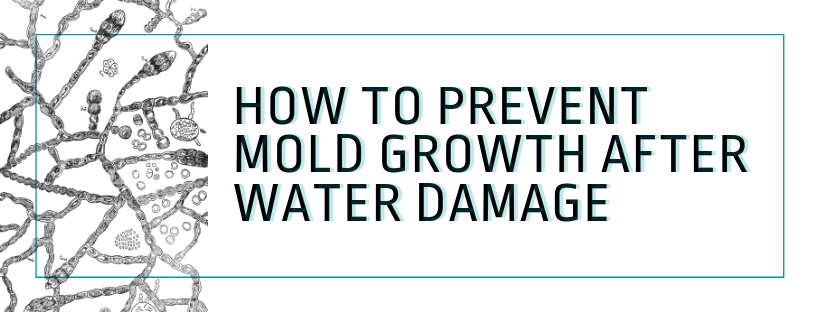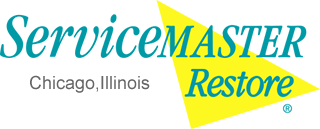How Fast Does Mold Grow?
Mold growth is a process that includes three distinct phases. In the first two days after water damage occurs, mold begins its initial germination and growth. Between the third and the twelfth day, the spores begin to colonize within the structure. Then, between 18 and 21 days after the initial water damage, the growth becomes visible as it spreads across the structure.
It’s important to remember mold is incredibly active and damaging even when you can't easily see it. In those first two weeks after water damage, it is rapidly growing and spores spread through the air. This can lead to more extensive damage, and it’s also what causes long-term health problems for those who get exposed. Time is of the essence when you need to combat growth, which is why you need to respond in the first 24 to 48 hours.
Does Temperature Affect Mold Growth?
In short, yes. Most mold spores become active between temperatures of 60-80 degrees Fahrenheit. However, the temperature can affect mold growth regardless of the season. In cooler or warmer climates, mold can remain dormant. Luckily, solving your mold problem doesn't mean you have to keep your thermostat below freezing or above 80 degrees.
Mold spores tend to grow on cool surfaces when they contact warm air. The water vapor condenses into the moisture necessary for mold growth. In the summer, mold can grow in spaces where the air conditioning unit is broken or poorly maintained. In the winter, mold can grow in uninsulated areas.
Many times, your indoor air circulation is a significant factor in determining the temperature. Poor air circulation can result from your insulation, furniture setup or faulty heating and cooling units. If you find mold spores in the dead of winter or the height of summer, the air in your home may be contributing to the issue.
Not sure if the temperature in your home is encouraging mold growth? One of the best ways to evaluate your potential for mold is by getting a specialist to assess your air circulation. Temperature is only one reason why mold may spread, so it's critical to take preventive action if your space is prone to unhealthy mold growth.

No one wants water damage in the home. But, when water damage occurs, it’s important to act quickly to address it and restore a home or other structure to its former condition. Not only is this a good idea because it brings peace of mind to the victims of water damage — but it’s also important to prevent mold growth and the long-term mold growth presents.
When a pipe bursts, a roof leaks or a home otherwise floods due to a natural disaster, mold growth is the natural outcome of standing water and water-logged flooring, walls, and furniture. Growth, of course, poses a threat to the home, belongings and the health of anyone who spends time inside it. But how fast does mold grow after water damage? Here’s a look at everything you need to know about its growth and related health problems.
How to Prevent Mold Growth in Your Walls After Water Damage
What is the best way to prevent mold growth and its related health problems? The process for stopping mold in its tracks is relatively simple and includes just two steps:
- Remove the water: Moisture in a structure is what facilitates mold growth, and it’s not enough to simply open the windows and let a home air out. To prevent growth, you need to actively remove moistures from carpets, walls and furniture using professional equipment and tactics.
- Dry everything: After removing standing and excess water, it’s time to dry everything out. This includes furniture, baseboards, carpet pads and more. If you fail to fully dry everything exposed to water damage, the remaining water can lead to growth.
What Is the Difference Between Mold Removal and Mold Remediation?
Both mold removal and mold remediation aim to help homeowners avoid unhealthy or dangerous mold. However, mold removal only addresses the immediate problem, whereas mold remediation restores your space and prevents future growth.
Mold removal eliminates all visible mold from the infected area. Removal may handle nearby surfaces, but most times, it's a temporary fix for an ongoing issue. Mold is bound to occur naturally in many indoor and outdoor spaces, so it's essential to keep it under control with detailed, diagnostic treatment. That's where mold remediation comes in.
Mold remediation is a strategic, elaborate process that involves testing, analysis, sanitizing, cleaning and maintenance. Remediation is necessary for widespread or dangerous mold growth because it cleans and contains the source. This process involves expert sanitization, air filtering, disposal and prevention.
At ServiceMaster of Lincoln Park, we prevent further mold growth by disposing of the source and creating an environment that does not encourage growth. We maintain your home or business's moisture levels by evaluating your air and water systems. With long-term solutions, you can save money, time and hassle on getting rid of pesky mold spores.
Contact ServiceMaster of Lincoln Park
At ServiceMaster of Lincoln Park, we provide the tools and equipment needed to fully prevent growth and restore your home or other structure to its previous condition. We understand that damage of this nature is an urgent situation for you, and we respond with the urgency the situation demands.
Mold growth is a serious issue that only professionals should handle. Improper mold removal could increase spread, so we facilitate the process from start to finish. Our team does the job right the first time and offers competitive pricing for your peace of mind. Call us at (773) 346-6767 to schedule our affordable mold remediation services — anytime, anywhere.
If you have questions about water damage, growth, and related health problems, we’re here to answer them. Contact us today.

